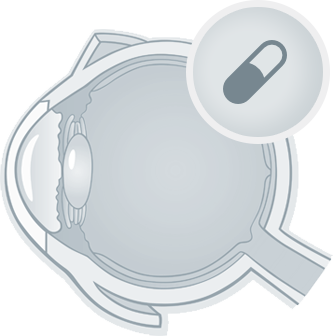Inicio / SPECIALISATIONS / GLAUCOMA / XEN IMPLANT
The increase in intraocular pressure (IOP) represents the main predisposing factor for the apparition and progression of glaucoma, and it is the only risk factor that one can currently try to control. When IOP cannot be reduced and controlled with topical drugs or laser therapy, surgical treatment is indicated. Filtration techniques for glaucoma surgery such as trabeculectomy or non-penetrating deep sclerectomy are the most common procedures and allow for a very efficient decrease in IOP. However, these are not without risks and complications may arise.
Currently, the development of Minimally Invasive Glaucoma Surgery (MIGS) techniques allows to efficiently reduce IOP in cases on open-angle glaucoma, becoming an additional option for some groups of patients. MIGS encompasses small incision procedures, surgical devices or small implants that provide less surgical manipulation, faster surgeries (without sutures), less visual repercussion and faster post-op recovery.
Among others, patients who will be able to benefit from these surgeries are those who present: uncontrolled ocular hypertension, mild or moderate glaucoma, in treatment with multiple anti-hypertensive drugs, intolerance to eye drops, slow progression, IOP not excessively high, high risk of filtration surgery, etc.
Xen® is one of the MIGS devices, consisting of a small gel tube with good biocompatibility that creates a direct connection (micro-fistula) between the anterior chamber and the subconjunctival area, allowing a controlled and monitored outflow of aqueous humour, thus reducing IOP. Especifically, this MIGS device involves the formation of a subconjunctival filtering bleb, whose integrity is involved in the success of the surgery in the medium and long term. It has proven a low complications rate and high efficiency with a good safety profile. Usually, Xen® is performed under loco-regional anaesthesia and can be carried out in combination with cataract surgery in the same surgical procedure.

One of the great benefits of this type of implants is that it enables to reduce or even discontinue the use of eye drops to treat glaucoma. Likewise, visual recovery is faster and usually does not hinder a regular glaucoma surgery if the need arises later on.
It is important to highlight that this type of intervention requires a thorough and comprehensive follow-up, generally including several follow-up visits in the first few weeks after the surgery.
The structures of eye are examined as well as the shape and functioning of the filtering bleb, ensuring the connection is still permeable, with an adequate filtration (nor too high nor too low) that avoids wide swings in intraocular pressure measurements.
Occasionally, it is necessary to manipulate the area of the surgery and even carry out manoeuvres or use additional local drugs to avoid the scarring process, as it would decrease the success of the intervention.